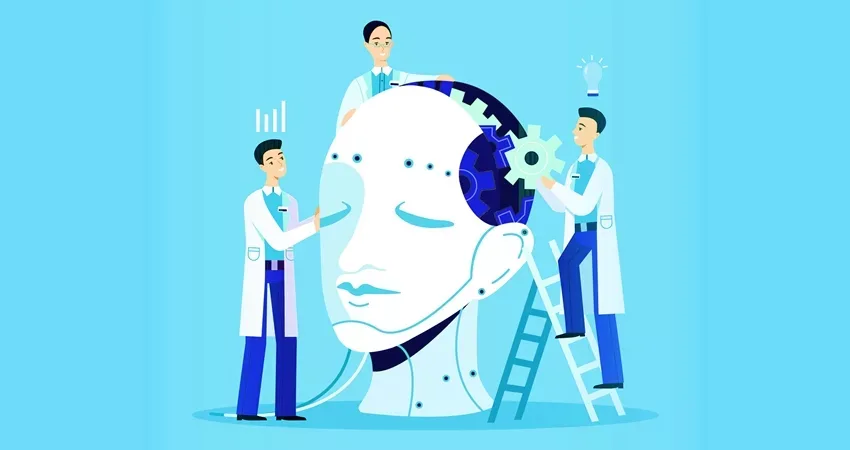Automation and Artificial intelligence have been around for some time now. They have been revolutionizing the way our businesses work in almost every sector of the economy.
We now have an integration/collaboration of both, i.e. Intelligent Automation (IA).
Automation together with human intelligence is redefining the way enterprises function.
Initially, IA was used mainly in the manufacturing sector and in bits and pieces in other functions as well. Now, it is rapidly being integrated into other business processes.
The way artificial intelligence is transforming businesses, intelligent automation is revolutionizing the world of automation.
The automated business process helps take a load of repetitive tasks off the employees, leaving them with more time to concentrate on the more innovative set of tasks. This improves their efficiency and creativity parallelly.
- In Processing Situational and Textual Data
IA gives machines the ability to capture and analyze situational or textual data and come up with an appropriate course of action. - Changing the way our business functions
IA helps us address certain issues regarding the functioning of our businesses such as processing vast volumes of data or the problem of high labor costs and labor scarcity, among others. - Simplifying performance across various domains
With IA machines can scan the data, check for correctness, spot inconsistencies, and come up with multiple courses of actions apt for the required business requirement.
IA is applicable in a wide variety of applications. The application examples of IA can be broadly divided into two categories, as follows:
In Financial Services
Investment managers use IA to go through research data to identify consistencies. IA systems are capable of spotting inconsistencies through a vast volume of data that would have been otherwise impossible for a human to go through.
Health Care
With the enormous amount of data available on medical research, robots could suggest alternate treatments based on the symptoms and medical history of the patient.
This could lead to faster diagnosis and treatment of the patient as against a doctor who would have to invest many hours to look into the case.
The final decision in regards to treatment would ultimately rest with the doctor. WellPoint, a health insurance provider in the US, has implemented a utilization review system that utilizes IBM’s Watson cognitive computing technology.
After about 15000 hours of training, the system is now able to understand the treatment prescriptions in unstructured English and match them to the WellPoint’s medical policies and guidelines.
This makes the system be able to provide quicker and better-informed decisions regarding the patient’s care and save significant time and costs.
Workflow Software and Conditional Logic
There are always times in any process, even though automated, that the consecutive steps depend on the logical outcome of the previously completed tasks.
A typical automated system might not be able to tackle such tasks.
Intelligent automation systems are capable of analyzing the pre-existing data regarding similar situations in the past and decide the direction of the workflow.
Kiva Systems developed robots for companies such as Crate & Barrel and Walgreens that are able to work and travel in warehouses without colliding with any obstacle, a fellow robot, or a human while working on the floor.
These robots are able to think for themselves and improve their efficiency with which they are able to fulfill orders.
Robots Collaborating with Humans
Robots working on the assembly line isn’t a new concept. However, earlier, robots were developed and programmed to complete specific tasks and were thus kept segregated from human workers for safety reasons.
Volkswagen has introduced collaborative robots which are capable of recognizing human workers nearby and react to the situation accordingly.
Thus, humans and robots are now capable of working together with harmony without concern for safety.
Driverless Cars
Autonomous vehicles are in the news for all the right reasons. Driverless cars improve the safety on roads better than human drivers as they reduce the possibility of human error or distraction during driving.
Autonomous driving technology by Google has empowered numerous cars already.
Intelligent Automation reduces the burden of repetitive tasks and empowers humans with smart technologies and agile processes for quicker and more intelligent decisions. The various benefits of IA can be summarized as below:
- It increases the process efficiency with a reduction in the human intervention required for repetitive tasks.
- Automation can lead to quicker response times and improved customer experience and satisfaction.
- Back office operations can be optimized with faster data analysis and decision making. Automated work would mean that there won’t be any breaks, and the system can be running 24*7.
- With lesser human involvement, monitoring the processes and tasks becomes more efficient, and chances of any fraud also reduce.
- It lessens the chances of human error, thus reducing risks and costs of the human workforce, which would otherwise be incurred.
- It will reduce the costs required to train human resources, thereby saving the costs of training and time both.
We are experiencing a revolution with powerful technologies streamlining workflows in organizations.
Advances in AI, robotics, and automation are fueling a new era of intelligent automation. Although IA is yet to reach its full potential, we can surely say that it is here to stay!
You May Also Like to Read:
Digital Process Automation Explained in Detail

